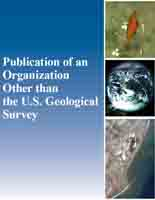Calibration of imperfect geophysical models by multiple satellite interferograms with measurement bias
Links
- More information: Publisher Index Page (via DOI)
- Open Access Version: External Repository
- Download citation as: RIS | Dublin Core
Abstract
Model calibration consists of using experimental or field data to estimate the unknown parameters of a mathematical model. The presence of model discrepancy and measurement bias in the data complicates this task. Satellite interferograms, for instance, are widely used for calibrating geophysical models in geological hazard quantification. In this work, we used satellite interferograms to relate ground deformation observations to the properties of the magma chamber at K i¯lauea Volcano in Hawai‘i. We derived closed-form marginal likelihoods and implemented posterior sampling procedures that simultaneously estimate the model discrepancy of physical models, and the measurement bias from the atmospheric error in satellite interferograms. We found that model calibration by aggregating multiple interferograms and downsampling the pixels in the interferograms can reduce the computation complexity compared to calibration approaches based on multiple data sets. The conditions that lead to no loss of information from data aggregation and downsampling are studied. Simulation illustrates that both discrepancy and measurement bias can be estimated, and real applications demonstrate that modeling both effects helps obtain a reliable estimation of a physical model’s unobserved parameters and enhance its predictive accuracy. We implement the computational tools in the RobustCalibration package available on CRAN.
| Publication type | Article |
|---|---|
| Publication Subtype | Journal Article |
| Title | Calibration of imperfect geophysical models by multiple satellite interferograms with measurement bias |
| Series title | Technometrics |
| DOI | 10.1080/00401706.2023.2182365 |
| Volume | 65 |
| Issue | 4 |
| Publication Date | April 05, 2023 |
| Year Published | 2023 |
| Language | English |
| Publisher | Taylor and Francis |
| Contributing office(s) | Volcano Science Center |
| Description | 12 p. |
| First page | 453 |
| Last page | 464 |


